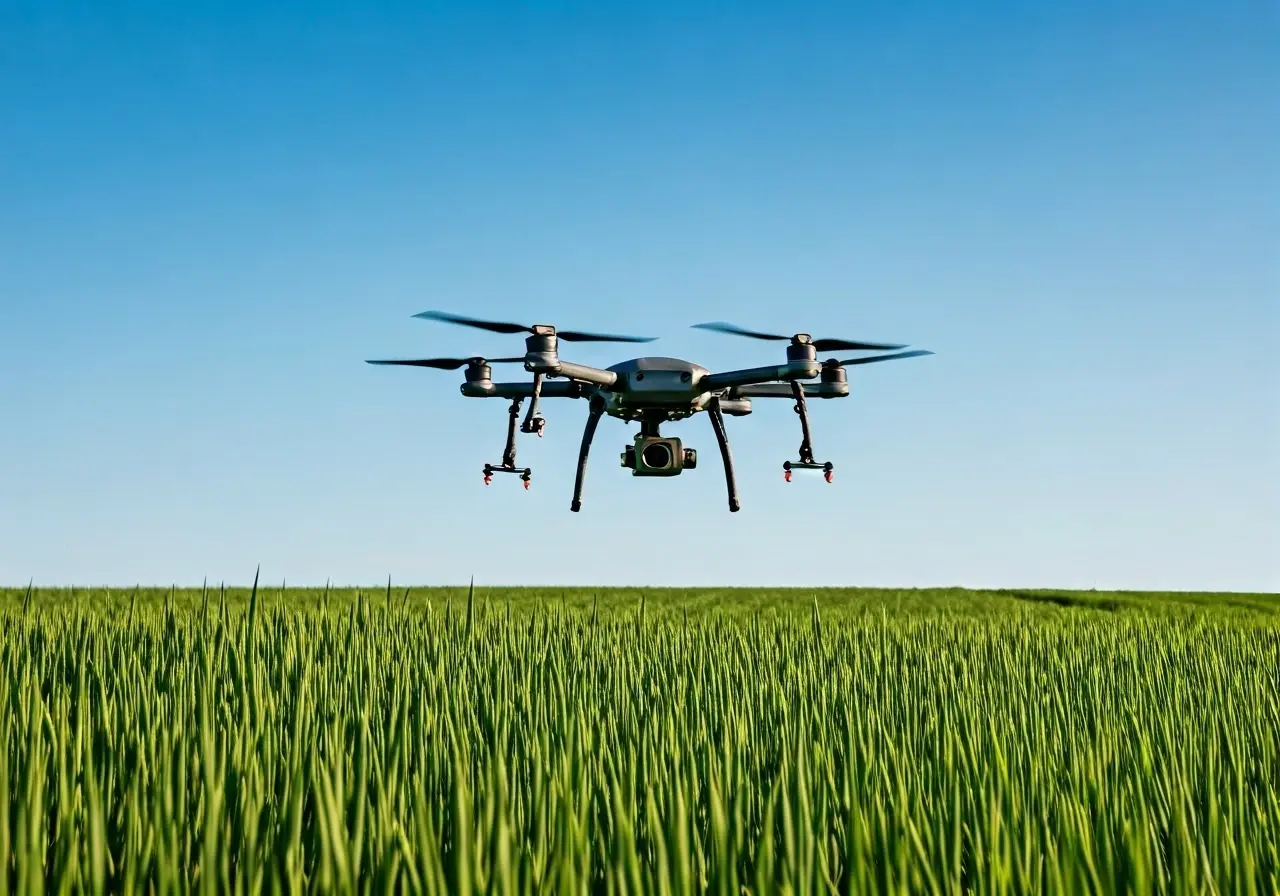
How Agras Drones Are Transforming Precision Agriculture
Share
In the ever-evolving world of agriculture, technology plays a crucial role in enhancing efficiency and productivity. Among the latest innovations, Agras drones stand out for their potential to revolutionize precision agriculture. In this blog, we’ll explore how these drones are transforming the way farmers work, making agriculture smarter and more sustainable.
The Role of Drones in Modern Agriculture
Drones have become an essential tool in modern agriculture, offering a bird’s-eye view of farmland and providing valuable data that can enhance decision-making processes. Agras drones are at the forefront of this technological revolution, enabling farmers to optimize their operations and achieve better results.
With the increasing need for sustainable and efficient farming methods, drones have stepped up to fill a crucial gap. By providing detailed aerial imagery, these drones allow farmers to monitor large swathes of land swiftly. The days of manually walking through miles of fields are swiftly becoming a distant memory as farmers now rely on the precision and accuracy of drones. Agras drones, in particular, are equipped with advanced GPS systems and real-time data transmission, enabling farmers to take immediate action based on the data collected. This immediate feedback loop ensures that potential problems are nipped in the bud, promoting healthier crop growth and yield.
Moreover, the ability of Agras drones to gather vast amounts of data quickly and efficiently is transforming the way farmers conduct research on their lands. For instance, by examining factors like soil variability, moisture levels, and crop health, agronomists can anticipate challenges and strategize long-term plans to address them. This leap in data-driven farming highlights the importance of embracing modern tools like drones to ensure that agriculture evolves alongside technology. In many ways, this is just the beginning of a long journey toward smarter, more informed agricultural practices.
How Agras Drones Enhance Efficiency
With Agras drones, tasks that once took days or weeks can now be completed in a matter of hours. These drones can cover large areas quickly, reducing the time and labor required for monitoring and managing crops. This enhanced efficiency translates into cost savings and greater productivity for farmers.
One of the standout features of Agras drones is their ability to conduct precision spraying. Traditionally, crop spraying has been a labor-intensive and time-consuming process. However, with the advanced spraying technology embedded in Agras drones, farmers can achieve uniform coverage over vast fields in a fraction of the time. This not only speeds up the process but also minimizes the waste of resources such as pesticides and water, resulting in significant cost reductions. Farmers are now able to maintain healthier crops by ensuring that spraying is efficient and timely.
Efficiency is further enhanced through the use of detailed mapping. Agras drones provide farmers with precise topographical maps and the ability to identify uneven terrain or problem areas in a field. By pinpointing these areas, farmers can focus their resources where they are most needed, rather than using a one-size-fits-all approach. This targeted management leads to increased productivity and healthier crops, both of which are crucial to meeting the global demand for food.
Precision Farming Through Advanced Technology
Agras drones are equipped with advanced sensors and cameras that provide detailed insights into crop health and soil conditions. This level of precision allows farmers to identify potential issues earlier and apply targeted interventions, such as precise irrigation or pest control, enhancing crop yields and quality.
The incorporation of infrared and multi-spectral imaging in Agras drones provides farmers with unprecedented access to data. Through these advanced imaging techniques, drones can capture beyond what the naked eye can see, revealing stress factors affecting crops. For example, infrared imaging can detect variations in crop temperature, which may indicate water stress or disease. This invaluable information guides farmers in implementing corrective actions, ensuring the optimal health and productivity of their crops.
Beyond imaging, advanced algorithms developed for Agras drones allow for the processing of vast amounts of data into comprehensible formats. Farmers can utilize this digitized data to make informed decisions about crop planting and harvesting times, thus maximizing yield results. Integrating these technological advancements means farmers spend less time guessing and more time optimizing their resources. Through precision farming, we witness a paradigm shift in agriculture where data analytics become the backbone of every decision, heralding a new era where technology and agriculture function hand-in-hand.
Promoting Sustainable Agricultural Practices
As sustainability becomes increasingly crucial in agriculture, Agras drones offer solutions that align with eco-friendly practices. By optimizing resource use and minimizing waste, these drones help reduce the environmental impact of farming, contributing to the broader goal of sustainable food production.
The environmental benefits of Agras drones are clearly seen in their ability to reduce chemical runoff. Traditionally, over-application of fertilizers and pesticides has led to detrimental environmental effects, including soil degradation and water contamination. Agras drones ensure precise application by spraying crops with exact amounts needed, significantly reducing the risk of excess chemicals leaching into surrounding ecosystems. The result is not only environmentally friendly but also promotes healthier soil and water systems, crucial to maintaining biodiversity in and around farming areas.
Further contributing to sustainability, Agras drones operate with a lower carbon footprint compared to traditional machinery. The battery-powered drones are engineered for low energy consumption, an essential feature for eco-conscious farming. As the world continues to emphasize reducing carbon emissions, the adoption of Agras drones represents a forward-thinking approach that aligns with global environmental goals. Besides minimizing emissions, these drones embody the shift toward renewable energy sources essential for the future of sustainable agriculture.
The Future of Agriculture is Here
Agras drones are undeniably making a significant impact on precision agriculture. By improving efficiency, ensuring better crop health, and promoting sustainability, these drones are paving the way for a new era in farming. As technology continues to advance, the possibilities for innovation within agriculture are endless, offering hope for more sustainable and productive farming practices worldwide.

